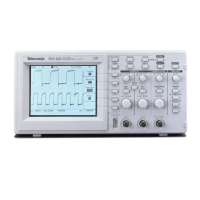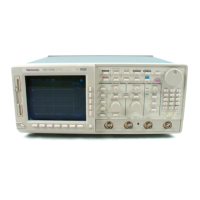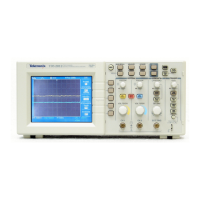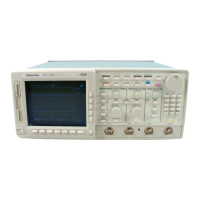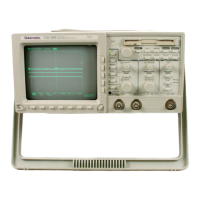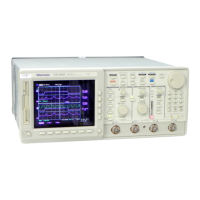TDS 420A, TDS 430A, TDS 460A & TDS 510A User Manual
3–117
Taking Cursor Measurements
Use the cursors to measure the difference (either in time or voltage) between two
locations in a waveform record. This section describes cursors — how to select
their type and mode, how to display them, and how to use them to take
measurements.
Description
Cursors are two markers that you position with the general purpose knob. As you
position the cursors, readouts on the display report and update measurement
information.
There are three cursor types: horizontal bar, vertical bar, and paired
(see Figure 3–62).
Horizontal Bar Cursors Vertical Bar Cursors
Paired Cursors
Figure 3–62: Cursor Types
Horizontal bar cursors measure vertical parameters (typically volts).
Vertical bar cursors measure horizontal parameters (typically time or frequency).
Paired cursors measure both vertical and horizontal parameters simultaneously.
Look at Figure 3–62. Note that each of the two paired cursors has a long vertical
bar paired with an X. The Xs measure vertical parameters; the long vertical bars
measure horizontal parameters.
NOTE. When cursors measure certain math waveforms, the measurement may not
be of time, frequency, or voltage. Cursor measurement of those math waveforms
are described in Waveform Math, which begins on page 3–139.
Cursor Types
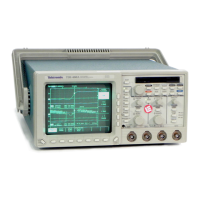
